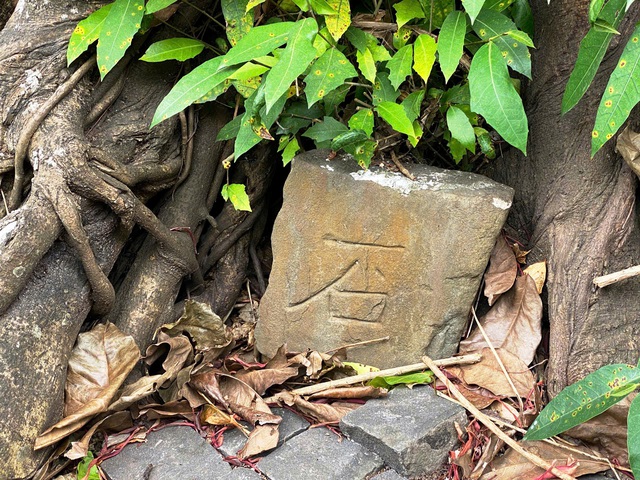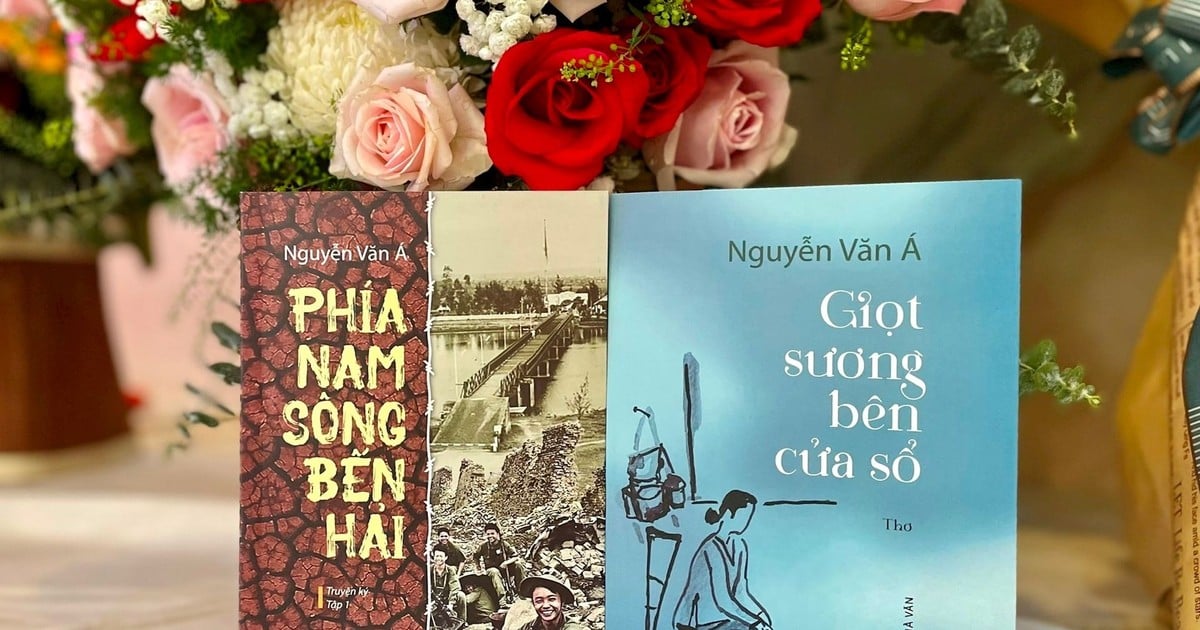Afternoon 1.4, exchange with Thanh Nien reporter, Mr. Pham Phu Ngoc, Director of Hoi An Cultural Heritage Management and Conservation Center, said that the unit has sent a report to the People's Committee of Hoi An City (Quang Nam) about the incident of the stele relic of the waterway in Cam Pho Ward being vandalized.
According to Mr. Ngoc, initial information collected from local residents shows that at around 6 a.m. yesterday, March 31, when people went to burn incense at the stele to suppress the water tunnel, they discovered that the stele had been vandalized.

The words on the stele were erased.
PHOTO: CX
About 4 hours earlier, at 2:00 a.m. on March 31, someone saw a motorbike parked on the sidewalk of Phan Chau Trinh Street next to a banyan tree and heard the sound of a hammer being knocked.
"This morning, April 1, the Hoi An Cultural Heritage Management and Conservation Center coordinated with the People's Committee of Cam Pho Ward to visit the site of the stele next to house 98A Phan Chau Trinh Street to survey and record that the stele had been vandalized. At the scene, the letters and carvings on the stone stele's surface had been chiseled away, causing almost complete damage," said Mr. Ngoc.
Mr. Ngoc also said that the center has informed the Cam Pho Ward Police about the relic to grasp the situation and collect information to carry out professional investigation work.
In addition, the People's Committee of Hoi An City is requested to direct the functional forces to investigate and handle the subjects who have committed acts of vandalism against the relic according to the provisions of law.

The stele is under the banyan tree.
PHOTO: CX
According to the list of historical and cultural relics of Hoi An city, the stele relic is located in protection area I of the special national relic - World Cultural Heritage of Hoi An ancient town.
The relic is classified as a type I conservation value, with state ownership. The stone stele is placed inside a small shrine built of bricks, located in the heart of an ancient banyan tree. This banyan tree has also been listed as a protected ancient tree by the People's Committee of Hoi An City. The stele faces north, and is engraved with Chinese characters (Bac De decreed to establish the pole of the royal wind and water protection road) and images of talismans.

Ancient stele was broken
PHOTO: CX
From top to bottom, near the forehead of the stele, there are 3 circles carved, the middle circle is smaller than the two sides, distributed quite evenly. The middle consists of 3 parts, below the middle circle is a row of Chinese characters (just mentioned). Below the circle on the right side of the stele (from the outside looking in) is carved the image of the North Star, vertically along the body of the stele are 7 circles connected by straight lines... Continuing down along the body of the stele is the line of words "An ma ni bat me hong".

The stone engraved with Chinese characters is placed next to the stele under the banyan tree.
PHOTO: CX
The bottom part is engraved with 3 talismans, the middle one is square, measuring 19 x 20 cm; the 2 side ones are smaller, rectangular, measuring 10 x 20 cm.
The talisman on the left (from the outside looking in) has blurred Chinese characters. The talisman on the right has the Chinese characters for fire, wood, and earth. At the bottom of the stele are the three characters "Thai Nhac Son" spanning the entire width of the stele.
Mr. Ngoc said that many researchers believe that this stele was used to control water and is related to the worship of the Northern Emperor Tran Vu at the Cau Pagoda relic.
Source: https://thanhnien.vn/tam-bia-co-tran-yem-tai-chua-cau-hoi-an-bi-pha-hoai-185250401171125748.htm





![[Photo] Overcoming all difficulties, speeding up construction progress of Hoa Binh Hydropower Plant Expansion Project](https://vstatic.vietnam.vn/vietnam/resource/IMAGE/2025/4/12/bff04b551e98484c84d74c8faa3526e0)
![[Photo] Closing of the 11th Conference of the 13th Central Committee of the Communist Party of Vietnam](https://vstatic.vietnam.vn/vietnam/resource/IMAGE/2025/4/12/114b57fe6e9b4814a5ddfacf6dfe5b7f)
















































































Comment (0)